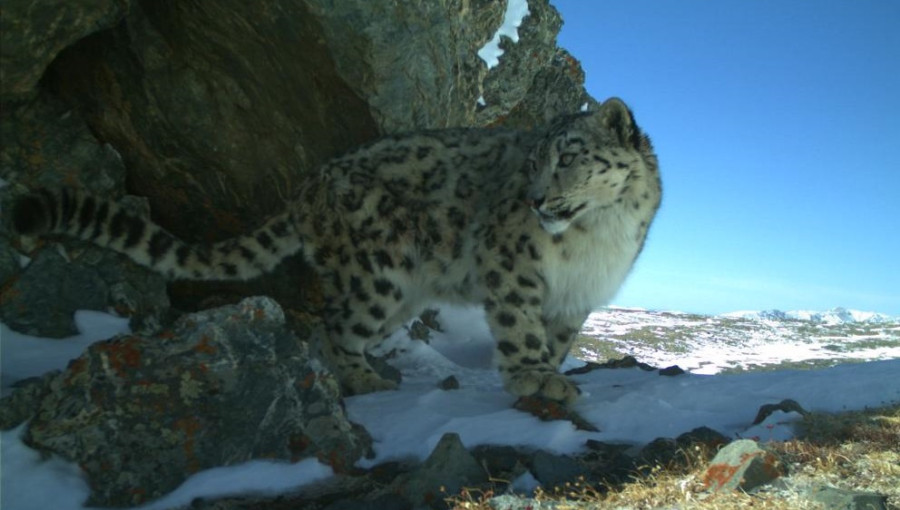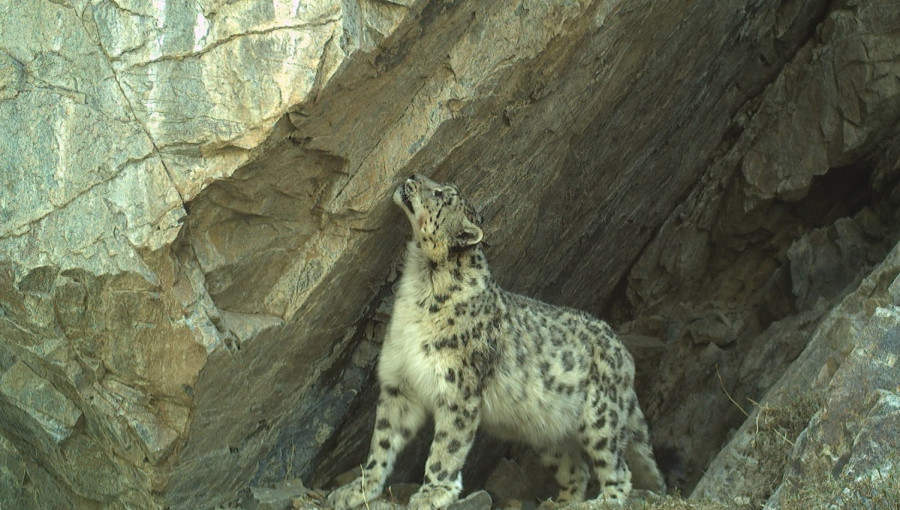How do snow leopards communicate among themselves and how can such knowledge help monitoring of these elusive cats?

Mongolia Snow Leopard Project
Date of publication:
Snow leopards use at least seven different behaviours for communication and most often leave scant messages in narrow gorges by scraping and urine marking. These are among the results of a new study by international team of researchers that took place in the Altai mountains of Mongolia and was led by Biotechnical Faculty from University of Ljubljana. New insights will be used to improve the efficiency of camera-trapping monitoring.
New findings came from a combination of three methods used by the scientists, including surveillance of marking sites with camera traps, searching for signs of scraping along transects in various habitats and following snow leopard footprints in the snow. Study showed that the number of scrapes (shallow pits in the sand made by snow leopards when marking) observed at potential camera-trapping sites represents a good predictor of snow leopard visitation rate.
“We used these results to develop recommendations for improving the camera trapping surveys. Improved understanding of the snow leopard communication behaviour will thus increase the efficiency of snow leopard monitoring, which will help us to better inform conservation efforts aimed to protect this keystone species in the mountain ecosystems” said lead author of the study, dr. Miha Krofel from the Biotechnical faculty of the UL.
There might be as few as 3000 snow leopards left in the wild, although exact number is hard to estimate due to imperfect monitoring. Researchers hope that the new study by an international team from Slovenia, Italy, Mongolia and U.S.A. will help improving these estimates and thus contribute to species conservation.
Results of the study were published in the scientific journal Behavioural Ecology and Sociobiology.
Study was partly funded also by the Slovenian Research and Innovation Agency through projects ExtremePredator and InterMuc.
Original article:
- Krofel, M., Oliveira, T., Rovero, F., Groff, C., Augugliaro, C., Oberosler, V., Allen, M.L. 2025. Communication behavior of the snow leopard (Panthera uncia): understanding marking-behavior patterns to optimize camera-trapping studies. – Behavioral Ecology and Sociobiology, 79: 32
Contact for further information: Miha Krofel, Biotechnical Faculty, University of Ljubljana, miha.krofel@bf.uni-lj.si




